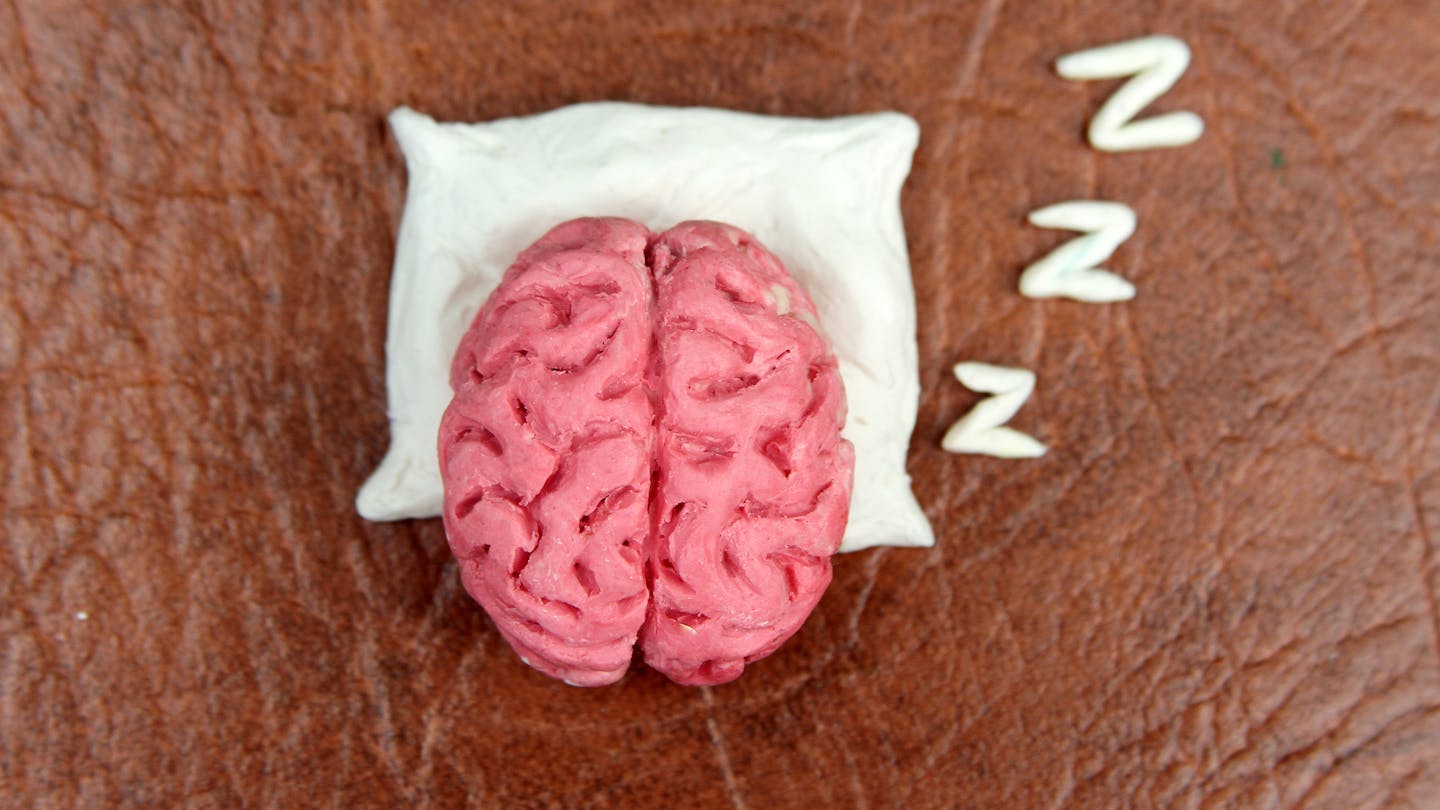
We spend nearly a third of our lives asleep, yet sleep is anything but wasted time. Far from being passive downtime, it is an active and essential process that helps restore the body and protect the brain. When sleep is disrupted, the brain feels the consequences – sometimes in subtle ways that accumulate over years.
In a new study, my colleagues and I examined sleep behaviour and detailed brain MRI scan data in more than 27,000 UK adults between the ages of 40 and 70. We found that people with poor sleep had brains that appeared significantly older than expected based on their actual age.
What does it mean for the brain to “look older”? While we all grow chronologically older at the same pace, some people’s biological clocks can tick faster or slower than others. New advances in brain imaging and artificial intelligence allow researchers to estimate a person’s brain age based on patterns in brain MRI scans, such as loss of brain tissue, thinning of the cortex and damage to blood vessels.
In our study, brain age was estimated using over 1,000 different imaging markers from MRI scans. We first trained a machine learning model on the scans of the healthiest participants – people with no major diseases, whose brains should closely match their chronological age. Once the model “learned” what normal ageing looks like, we applied it to the full study population.
Having a brain age higher than your actual age can be a signal of departure from healthy ageing. Previous research has linked an older-appearing brain to faster cognitive decline, greater dementia risk and even higher risk of early death.
Sleep is complex, and no single measure can tell the whole story of a person’s sleep health. Our study, therefore, focused on five aspects of sleep self-reported by the study participants: their chronotype (“morning” or “evening” person), how many hours they typically sleep (seven to eight hours is considered optimal), whether they experience insomnia, whether they snore and whether they feel excessively sleepy during the day.
These characteristics can interact in synergistic ways. For example, someone with frequent insomnia may also feel more daytime sleepiness, and having a late chronotype may lead to shorter sleep duration. By integrating all five characteristics into a “healthy sleep score”, we captured a fuller picture of overall sleep health.
People with four or five healthy traits had a “healthy” sleep profile, while those with two to three had an “intermediate” profile, and those with zero or one had a “poor” profile.
When we compared brain age across different sleep profiles, the differences were clear. The gap between brain age and chronological age widened by about six months for every one point decrease in healthy sleep score. On average, people with a poor sleep profile had brains that appeared nearly one year older than expected based on their chronological age, while those with a healthy sleep profile showed no such gap.
We also considered the five sleep characteristics individually: late chronotype and abnormal sleep duration stood out as the biggest contributors to faster brain ageing.
A year may not sound like much, but in terms of brain health, it matters. Even small accelerations in brain ageing can compound over time, potentially increasing the risk of cognitive impairment, dementia and other neurological conditions.
The good news is that sleep habits are modifiable. While not all sleep problems are easily fixed, simple strategies: keeping a regular sleep schedule; limiting caffeine, alcohol and screen use before bedtime; and creating a dark and quiet sleep environment can improve sleep health and may protect brain health.

How exactly does the quality of a person’s sleep affect their brain health?
One explanation may be inflammation. Increasing evidence suggests that sleep disturbances raise the level of inflammation in the body. In turn, inflammation can harm the brain in several ways: damaging blood vessels, triggering the buildup of toxic proteins and speeding up brain cell death.
We were able to investigate the role of inflammation thanks to blood samples collected from participants at the beginning of the study. These samples contain a wealth of information about different inflammatory biomarkers circulating in the body. When we factored this into our analysis, we found that inflammation levels accounted for about 10% of the connection between sleep and brain ageing.
Other processes may also play a role
Another explanation centres on the glymphatic system – the brain’s built-in waste clearance network, which is mainly active during sleep. When sleep is disrupted or insufficient, this system may not function properly, allowing harmful substances to build up in the brain.
Yet another possibility is that poor sleep increases the risk of other health conditions that are themselves damaging for brain health, including type 2 diabetes, obesity and cardiovascular disease.
Our study is one of the largest and most comprehensive of its kind, benefiting from a very large study population, a multidimensional measure of sleep health, and a detailed estimation of brain age through thousands of brain MRI features. Though previous research connected poor sleep to cognitive decline and dementia, our study further demonstrated that poor sleep is tied to a measurably older-looking brain, and inflammation might explain this link.
Brain ageing cannot be avoided, but our behaviour and lifestyle choices can shape how it unfolds. The implications of our research are clear: to keep the brain healthier for longer, it is important to make sleep a priority.
This article is republished from The Conversation, a nonprofit, independent news organization bringing you facts and trustworthy analysis to help you make sense of our complex world. It was written by: Abigail Dove, Karolinska Institutet
Read more:
- Prediabetes remission possible without dropping pounds, our new study finds
- Don’t cut them out: lymph nodes may be key to cancer treatment
- Sauna competitions have gone from dangerous endurance to therapeutic showmanship
Abigail Dove receives funding from Alzheimerfonden, Demensfonden, and the Loo and Hans Osterman Foundation for Medical Research.


 The Conversation
The Conversation
 Raw Story
Raw Story NBC Southern California
NBC Southern California CNN
CNN NBC News
NBC News POPSUGAR
POPSUGAR The US Sun Health
The US Sun Health The Daily Beast
The Daily Beast